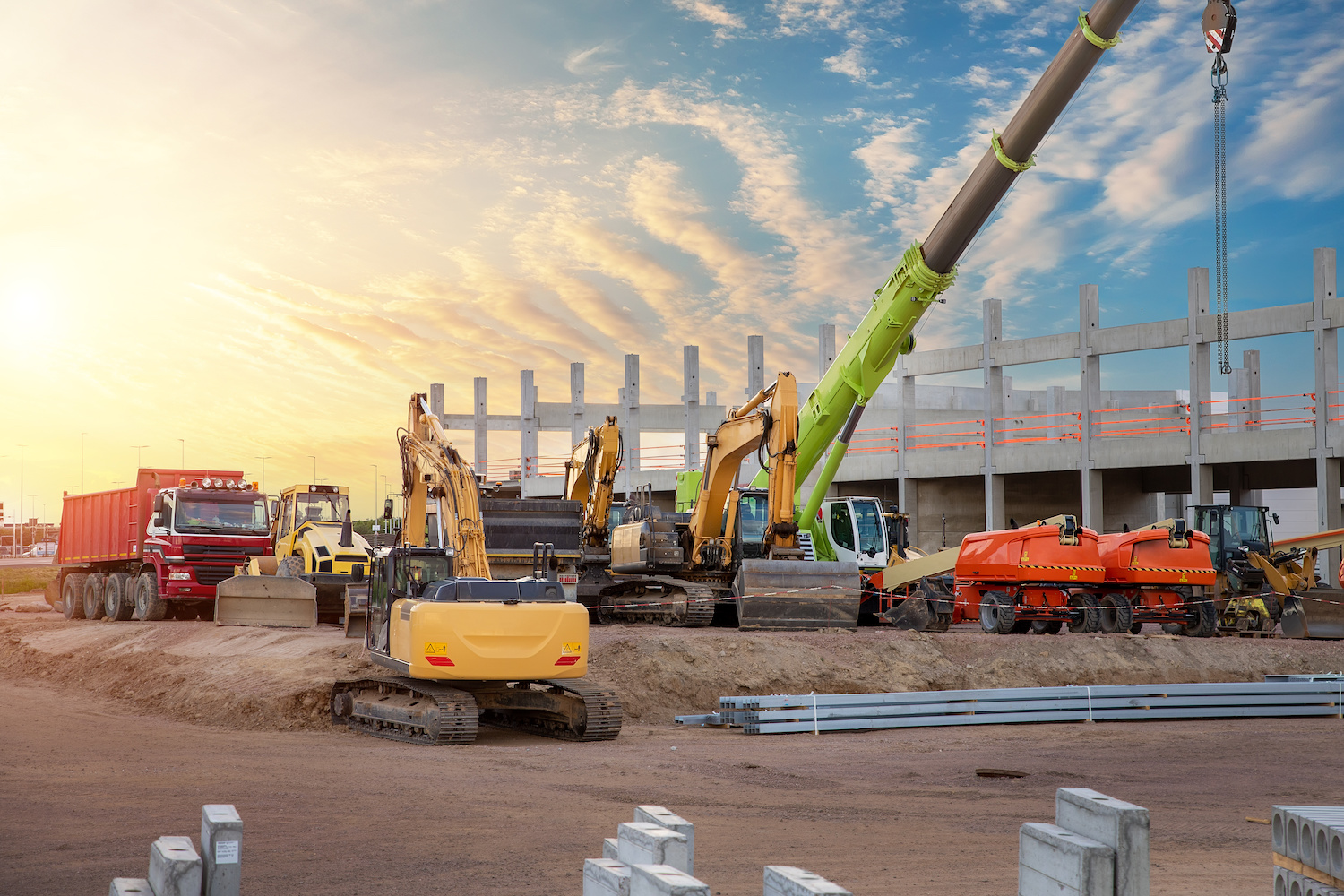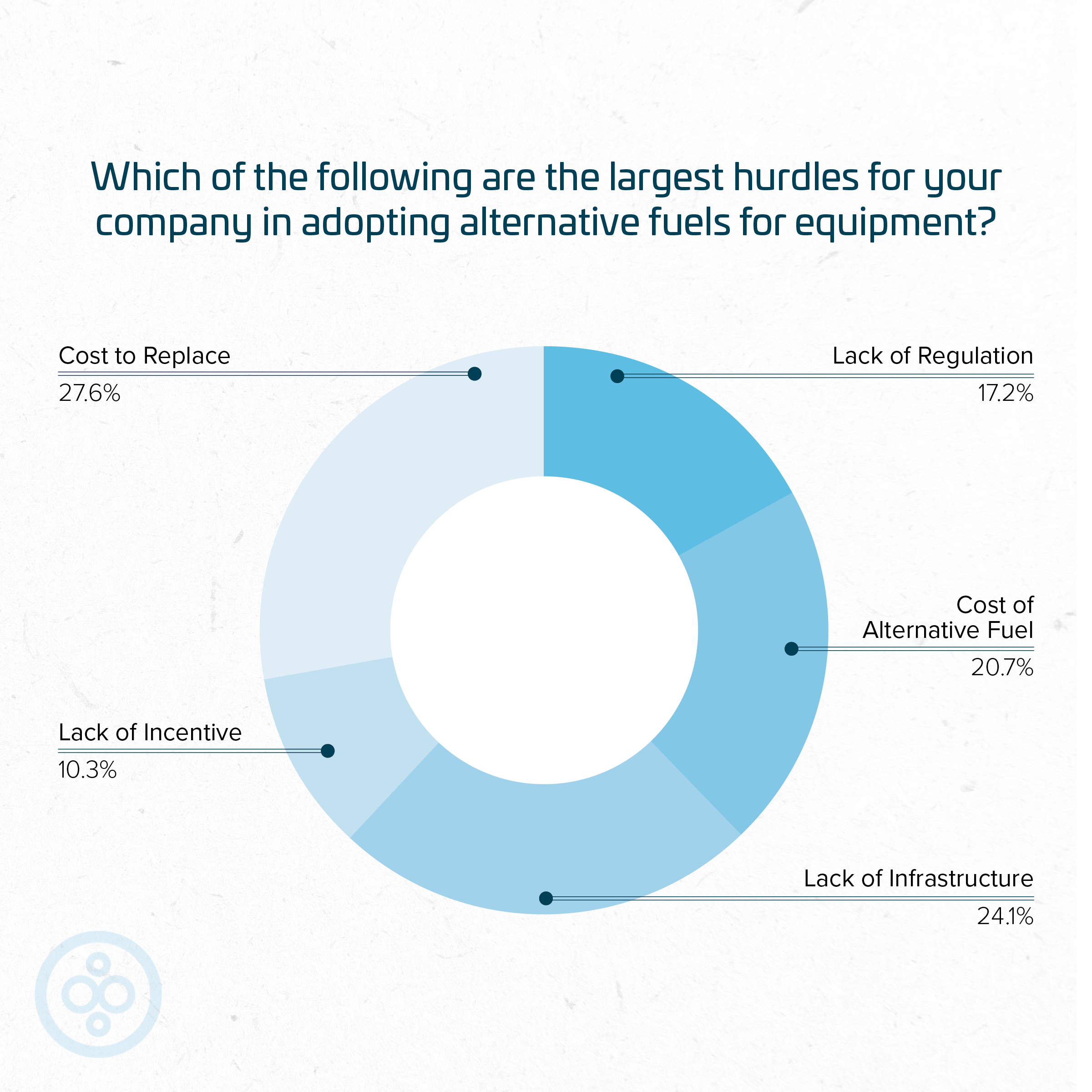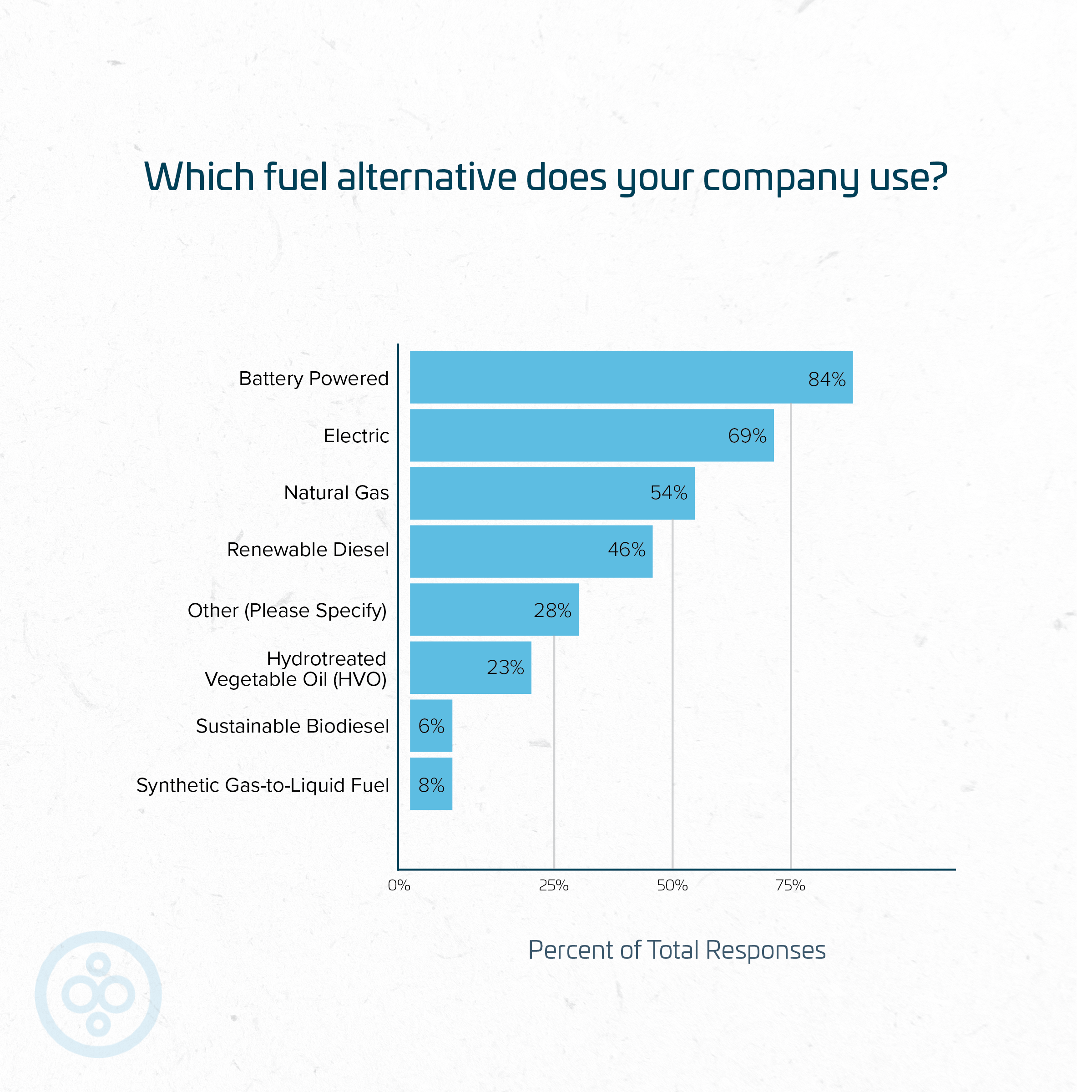
In response to the increasing volatility of fuel prices as well as rising ESG requirements and expectations, construction companies and other heavy equipment users are more often considering alternatives when developing sustainable, long-term fuel strategies.
That was one of the key findings of BuiltWorlds’ recently released 2024 Sustainable Jobsites Benchmarking Report, which included data from the company’s 2024 Sustainable Jobsites Survey.
“Departing from an over reliance on non-renewable forms of energy toward more sustainable options is a priority to many companies in the AEC space,” wrote BuiltWorlds Research Analyst Sofie Richardson, who authored the report. “As investments in equipment fuel alternatives progress, one can expect growing adoption of those solutions.”

When it came to using alternative equipment fuels on projects, the survey found that about 46% of respondents are using alternative fuels to at least some degree. However, the majority of that group (32.1%) are only piloting an alternative, while 10.7% are using alternative fuels for several projects and 3.6% for most. Just over 46% of respondents have yet to implement any alternative fuels on jobsites, making the current split between alternative fuel users and non-users effectively 50/50.
”All data on alternative equipment fuel points to a significant interest despite low adoption ratings,” says Tyler Sewall, senior director of research for BuiltWorlds. “It is a question merely of when, not if, fuel alternatives become a significant part of the construction process.”
For some, ‘when’ may not be so long.

The report reads, “Of organizations that do not currently use any equipment fuel alternatives, 15% plan to use alternative fuels in the next three years, and another 23% plan to use them as soon as next year.”
Driving those adoption rates up, and really improving the ease of adoption overall, as Sewall explains, will be the level of investment we see in the alternative fuel market. And in that regard, prospects are bright.
“While many alternative fuels seem out of reach in existing markets,” Sewall says, “significant federal and private investments in infrastructure as part of grid transition efforts should influence the rise of opportunities for fuel alternative technologies.”
If that proves true, we may see upwards of 80% of construction equipment users employing alternative fuels on jobsites by 2027.

Discussion
Be the first to leave a comment.
You must be a member of the BuiltWorlds community to join the discussion.